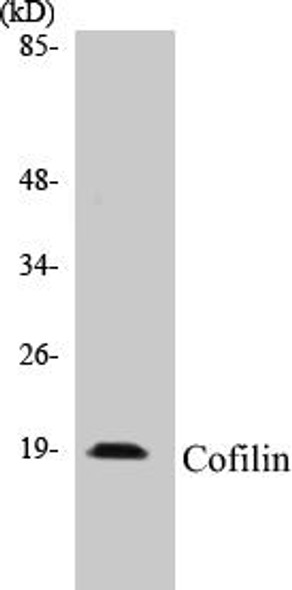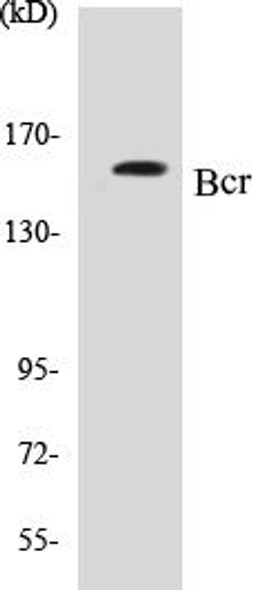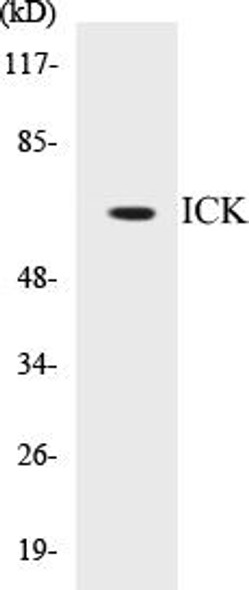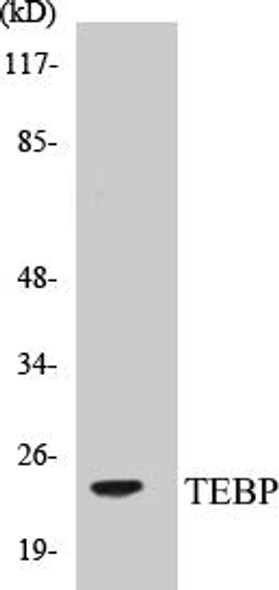SKP1A/p19 Colorimetric Cell-Based ELISA Kit
- SKU:
- CBCAB00856
- Product Type:
- ELISA Kit
- ELISA Type:
- Cell Based
- Research Area:
- Immunology
- Reactivity:
- Human
- Mouse
- Rat
- Detection Method:
- Colorimetric
Description
SKP1A/p19 Colorimetric Cell-Based ELISA Kit
The SKP1A/P19 Colorimetric Cell-Based ELISA Kit is specifically designed for the accurate detection of SKP1A and P19 levels in cell lysates and culture supernatants. This kit offers high sensitivity and specificity, ensuring reliable and reproducible results for a variety of research applications.SKP1A and P19 are important proteins involved in cell cycle regulation and protein degradation pathways. They play key roles in maintaining cellular homeostasis and are implicated in various diseases, including cancer and neurodegenerative disorders.
Studying the levels of SKP1A and P19 can provide valuable insights into disease mechanisms and potential therapeutic targets. With its easy-to-use format and robust performance, the SKP1A/P19 Colorimetric Cell-Based ELISA Kit is an essential tool for researchers seeking to explore the functions and implications of SKP1A and P19 in cellular processes and disease progression.
| Product Name: | SKP1A/p19 Colorimetric Cell-Based ELISA |
| Product Code: | CBCAB00856 |
| ELISA Type: | Cell-Based |
| Target: | SKP1A/p19 |
| Reactivity: | Human, Mouse, Rat |
| Dynamic Range: | > 5000 Cells |
| Detection Method: | Colorimetric 450 nmStorage/Stability:4°C/6 Months |
| Format: | 96-Well Microplate |
The SKP1/p19 Cell-Based ELISA Kit is a convenient, lysate-free, high throughput and sensitive assay kit that can monitor SKP1/p19 protein expression profile in cells. The kit can be used for measuring the relative amounts of SKP1/p19 in cultured cells as well as screening for the effects that various treatments, inhibitors (ie. siRNA or chemicals), or activators have on SKP1/p19.
Qualitative determination of SKP1A/p19 concentration is achieved by an indirect ELISA format. In essence, SKP1A/p19 is captured by SKP1A/p19-specific primary antibodies while the HRP-conjugated secondary antibodies bind the Fc region of the primary antibody. Through this binding, the HRP enzyme conjugated to the secondary antibody can catalyze a colorimetric reaction upon substrate addition. Due to the qualitative nature of the Cell-Based ELISA, multiple normalization methods are needed:
| 1. | A monoclonal antibody specific for human GAPDH is included to serve as an internal positive control in normalizing the target absorbance values. |
| 2. | Following the colorimetric measurement of HRP activity via substrate addition, the Crystal Violet whole-cell staining method may be used to determine cell density. After staining, the results can be analysed by normalizing the absorbance values to cell amounts, by which the plating difference can be adjusted. |
| Database Information: | Gene ID: 6500, UniProt ID: P63208, OMIM: 601434, Unigene: Hs.171626 |
| Gene Symbol: | SKP1 |
| Sub Type: | None |
| UniProt Protein Function: | SKP1A: Essential component of the SCF (SKP1-CUL1-F-box protein) ubiquitin ligase complex, which mediates the ubiquitination of proteins involved in cell cycle progression, signal transduction and transcription. In the SCF complex, serves as an adapter that links the F-box protein to CUL1. SCF(BTRC) mediates the ubiquitination of NFKBIA at 'Lys-21' and 'Lys-22'; the degradation frees the associated NFKB1-RELA dimer to translocate into the nucleus and to activate transcription. SCF(Cyclin F) directs ubiquitination of CP110. Component of an E3 ubiquitin ligase complex containing UBE2D1, SIAH1, CACYBP/SIP, SKP1, APC and TBL1X. Component of the SCF(BTRC) complex, composed of SKP1, CUL1 and BTRC. Part of a SCF(BTRC)-like complex lacking CUL1, which is associated with phosphorylated NFKBIA and RELA; RELA interacts directly with NFKBIA. Component of the SCF(FBXO44) complex, composed of SKP1, CUL1 and FBXO44. Identified in a complex with SKP2, CKS1B and p27Kip1. Interacts with the cyclin A/CDK2 complex. Part of a SCF- like complex consisting of CUL7, RBX1, SKP1 and FBXW8. Part of several SCF complexes containing SKP1 and one of the F-box proteins. Component of a SCF(SKP2)-like complex containing CUL1, SKP1, TRIM21 and SKP2. Interacts with FBXO2, FBXO4, FBXW7 and TRIM21. Interacts with FBXO45. Component of the SCF(FBXO17) complex, composed of SKP1, CUL1 and FBXO17. Component of the SCF(FBXO27) complex, composed of SKP1, CUL1 and FBXO27. Component of the SCF(Cyclin F) complex consisting of CUL1, RBX1, SKP1 and CCNF. Belongs to the SKP1 family. 2 isoforms of the human protein are produced by alternative splicing. |
| UniProt Protein Details: | Protein type:Ubiquitin conjugating system; Cell cycle regulation Chromosomal Location of Human Ortholog: 5q31 Cellular Component: nucleoplasm; SCF ubiquitin ligase complex; PcG protein complex; cytosol Molecular Function:protein binding; ubiquitin-protein ligase activity Biological Process: positive regulation of ubiquitin-protein ligase activity during mitotic cell cycle; circadian rhythm; SCF-dependent proteasomal ubiquitin-dependent protein catabolic process; Notch signaling pathway; viral reproduction; regulation of ubiquitin-protein ligase activity during mitotic cell cycle; anaphase-promoting complex-dependent proteasomal ubiquitin-dependent protein catabolic process; protein ubiquitination; mitotic cell cycle; G2/M transition of mitotic cell cycle; G1/S transition of mitotic cell cycle |
| NCBI Summary: | This gene encodes a component of SCF complexes, which are composed of this protein, cullin 1, a ring-box protein, and one member of the F-box family of proteins. This protein binds directly to the F-box motif found in F-box proteins. SCF complexes are involved in the regulated ubiquitination of specific protein substrates, which targets them for degradation by the proteosome. Specific F-box proteins recognize different target protein(s), and many specific SCF substrates have been identified including regulators of cell cycle progression and development. Studies have also characterized the protein as an RNA polymerase II elongation factor. Alternative splicing of this gene results in two transcript variants. A related pseudogene has been identified on chromosome 7. [provided by RefSeq, Jul 2008] |
| UniProt Code: | P63208 |
| NCBI GenInfo Identifier: | 52783797 |
| NCBI Gene ID: | 6500 |
| NCBI Accession: | P63208.2 |
| UniProt Secondary Accession: | P63208,P34991, Q8TAY2, D3DQ97, D3DQ98, |
| UniProt Related Accession: | P63208 |
| Molecular Weight: | 163 |
| NCBI Full Name: | S-phase kinase-associated protein 1 |
| NCBI Synonym Full Names: | S-phase kinase-associated protein 1 |
| NCBI Official Symbol: | SKP1 |
| NCBI Official Synonym Symbols: | OCP2; p19A; EMC19; SKP1A; OCP-II; TCEB1L |
| NCBI Protein Information: | S-phase kinase-associated protein 1; SIII; OCP-2; p19skp1; organ of Corti protein 2; organ of Corti protein II; cyclin A/CDK2-associated p19; cyclin A/CDK2-associated protein p19; cyclin-A/CDK2-associated protein p19; transcription elongation factor B polypeptide 1-like; RNA polymerase II elongation factor-like protein OCP2 |
| UniProt Protein Name: | S-phase kinase-associated protein 1 |
| UniProt Synonym Protein Names: | Cyclin-A/CDK2-associated protein p19; p19A; Organ of Corti protein 2; OCP-2; Organ of Corti protein II; OCP-II; RNA polymerase II elongation factor-like protein; SIII; Transcription elongation factor B polypeptide 1-like; p19skp1 |
| Protein Family: | SKP1-like protein |
| UniProt Gene Name: | SKP1 |
| UniProt Entry Name: | SKP1_HUMAN |
| Component | Quantity |
| 96-Well Cell Culture Clear-Bottom Microplate | 2 plates |
| 10X TBS | 24 mL |
| Quenching Buffer | 24 mL |
| Blocking Buffer | 50 mL |
| 15X Wash Buffer | 50 mL |
| Primary Antibody Diluent | 12 mL |
| 100x Anti-Phospho Target Antibody | 60 µL |
| 100x Anti-Target Antibody | 60 µL |
| Anti-GAPDH Antibody | 60 µL |
| HRP-Conjugated Anti-Rabbit IgG Antibody | 12 mL |
| HRP-Conjugated Anti-Mouse IgG Antibody | 12 mL |
| SDS Solution | 12 mL |
| Stop Solution | 24 mL |
| Ready-to-Use Substrate | 12 mL |
| Crystal Violet Solution | 12 mL |
| Adhesive Plate Seals | 2 seals |
The following materials and/or equipment are NOT provided in this kit but are necessary to successfully conduct the experiment:
- Microplate reader able to measure absorbance at 450 nm and/or 595 nm for Crystal Violet Cell Staining (Optional)
- Micropipettes with capability of measuring volumes ranging from 1 µL to 1 ml
- 37% formaldehyde (Sigma Cat# F-8775) or formaldehyde from other sources
- Squirt bottle, manifold dispenser, multichannel pipette reservoir or automated microplate washer
- Graph paper or computer software capable of generating or displaying logarithmic functions
- Absorbent papers or vacuum aspirator
- Test tubes or microfuge tubes capable of storing ≥1 ml
- Poly-L-Lysine (Sigma Cat# P4832 for suspension cells)
- Orbital shaker (optional)
- Deionized or sterile water
*Note: Protocols are specific to each batch/lot. For the correct instructions please follow the protocol included in your kit.
| Step | Procedure |
| 1. | Seed 200 µL of 20,000 adherent cells in culture medium in each well of a 96-well plate. The plates included in the kit are sterile and treated for cell culture. For suspension cells and loosely attached cells, coat the plates with 100 µL of 10 µg/ml Poly-L-Lysine (not included) to each well of a 96-well plate for 30 minutes at 37°C prior to adding cells. |
| 2. | Incubate the cells for overnight at 37°C, 5% CO2. |
| 3. | Treat the cells as desired. |
| 4. | Remove the cell culture medium and rinse with 200 µL of 1x TBS, twice. |
| 5. | Fix the cells by incubating with 100 µL of Fixing Solution for 20 minutes at room temperature. The 4% formaldehyde is used for adherent cells and 8% formaldehyde is used for suspension cells and loosely attached cells. |
| 6. | Remove the Fixing Solution and wash the plate 3 times with 200 µL 1x Wash Buffer for five minutes each time with gentle shaking on the orbital shaker. The plate can be stored at 4°C for a week. |
| 7. | Add 100 µL of Quenching Buffer and incubate for 20 minutes at room temperature. |
| 8. | Wash the plate 3 times with 1x Wash Buffer for 5 minutes each time. |
| 9. | Add 200 µL of Blocking Buffer and incubate for 1 hour at room temperature. |
| 10. | Wash 3 times with 200 µL of 1x Wash Buffer for 5 minutes each time. |
| 11. | Add 50 µL of 1x primary antibodies (Anti-SKP1A/p19 Antibody and/or Anti-GAPDH Antibody) to the corresponding wells, cover with Parafilm and incubate for 16 hours (overnight) at 4°C. If the target expression is known to be high, incubate for 2 hours at room temperature. |
| 12. | Wash 3 times with 200 µL of 1x Wash Buffer for 5 minutes each time. |
| 13. | Add 50 µL of 1x secondary antibodies (HRP-Conjugated AntiRabbit IgG Antibody or HRP-Conjugated Anti-Mouse IgG Antibody) to corresponding wells and incubate for 1.5 hours at room temperature. |
| 14. | Wash 3 times with 200 µL of 1x Wash Buffer for 5 minutes each time. |
| 15. | Add 50 µL of Ready-to-Use Substrate to each well and incubate for 30 minutes at room temperature in the dark. |
| 16. | Add 50 µL of Stop Solution to each well and read OD at 450 nm immediately using the microplate reader. |
(Additional Crystal Violet staining may be performed if desired – details of this may be found in the kit technical manual.)










